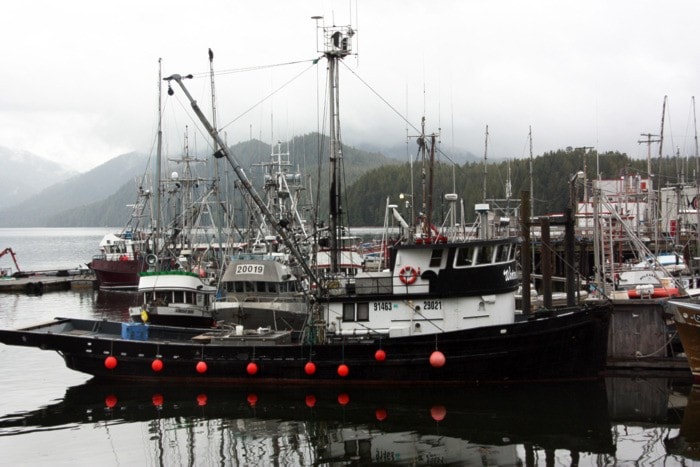There's a debris field larger than BC in the Pacific Ocean and it's floating straight for the west coast of North America.
The debris is from last year's tsunami that devastated parts of Japan, and pieces as small as bits of styrofoam to large oil drums are already washing up on the shores of Haida Gwaii and with more of it is coming every day.
Much of what the Provincial government has said publicly about the arrival of debris seems to indicate that they are resigned to having to clean it up as it washes ashore.
BC and the States of Washington, Oregon and California say that they are working on a response plan which will at least involve shoreline cleaning with volunteers. Disposal bins for the debris have already been provided on Haida Gwaii beaches.
But the Skeena - Queen Charlotte Regional District isn't convinced the province is doing much of anything, and what they are doing isn't involving the communities which will be affected.
“Nothing is happening on this issue, discussion-wise,” says the chair of the regional district board, Barry Pages.
Not content to wait for the province to make up its mind on what to do, the regional district has an idea they want to pitch to the Premier: hire fishing boats to clean it up while it's still out at sea.
“We have a very sizeable seine fleet left with nothing to do, and seining would be a very effective way of collecting this garbage,” says board member Des Nobles.
Not all of the Japanese debris is floating on the surface of the water, so the board thinks that seining would be an ideal way of cleaning it up. Seining works by dropping a weighted net which sinks several feet below the surface of the water, while buoys keep the top edge of the net on the surface. The boat lets out the net in a wide circle and then closes the net in on itself like pulling on a drawstring of a purse; catching everything inside the circle in the net.
Theoretically the boats could then haul the debris out of the water like they would fish and unload it onto a barge that could ship it to a landfill before it had the chance to wash up on BC's shores, which would be a big pain to clean up.
“95 percent of that debris is going to wind up in places where nobody lives, it's going to make one hell of a mess,” says board member Knut Bjorndal.
The North Coast has many seine boats owned by independent fisherman who can not get enough salmon quota to make it worth going out anymore, so not only would it be easier to clean it up at sea, it would provide employment to north coast residents.
“We have our premier promoting jobs, jobs, jobs. This would be the perfect opportunity to create some jobs for people in industries where there haven't been any, and to solve a problem at the same time. I honestly would like us to get a meeting with the premier about this, it's that important,” says board member Anna Ashley.
The other board members agreed and what had started as an off-hand suggestion by Oona River representative, Karl Bergman, quickly turned into plans to ask Premier Christy Clark or at least one of her representatives to come up and talk to them about it this summer.
“I think that this issue is big enough that she should be making a trip here to see us,” says Ashley.
Whether Premier Clark will actually respond to their invitation remains to be seen, but the regional district isn't stopping there. They are also pushing to make sure that the tsunami debris issue is on the agenda of the Union of BC Municipalities meeting in September, and to start coordinating with other at-risk communities through the coastal communities network.
